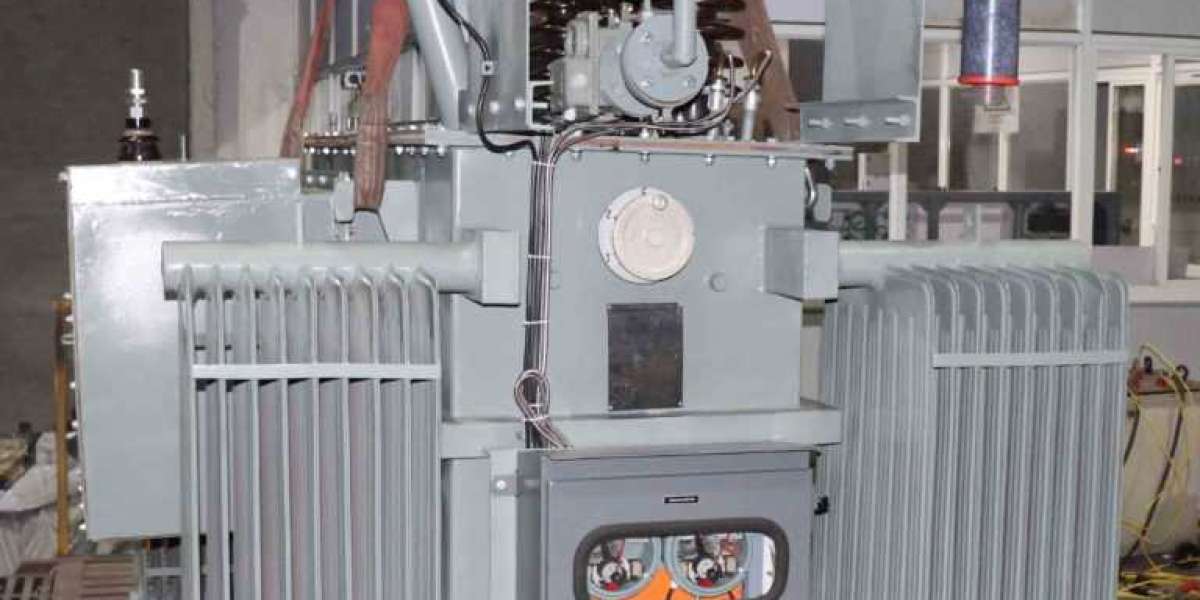INTRODUCTION
Transformers are essential electrical devices in power distribution, transmission, and industrial applications. They work on the principle of electromagnetic induction to transfer electrical energy between circuits, adjusting voltage levels as needed. This article explores different types of transformers, including distribution transformers, power transformers, 3-phase transformers, and furnace transformers, discussing their functions, construction, and applications.
What is a Transformer?
A transformer is an electrical device that changes the voltage of alternating current (AC) without altering its frequency. It consists of primary and secondary windings wound around a core, typically made of laminated silicon steel to reduce energy losses. Transformers function based on Faraday’s law of electromagnetic induction, which states that a change in magnetic flux induces an electromotive force (EMF) in a coil.
Basic Components of a Transformer
- Core – Provides a path for magnetic flux and is made of laminated sheets to minimize eddy current losses.
- Windings – Copper or aluminum coils that carry the electric current.
- Insulation – Prevents short circuits between windings.
- Cooling System – Can be air-cooled or oil-cooled to dissipate heat.
- Tap Changer – Adjusts the voltage output by changing the number of active turns in the winding.
- Bushings – Insulated terminals for external electrical connections.
Types of Transformers
1. Distribution Transformers
Distribution transformers are used in power distribution networks to step down voltage to levels suitable for residential, commercial, and small industrial applications. They typically have a rating of up to 5000 kVA and operate at lower efficiency since they are designed for continuous operation with varying loads.
Features of Distribution Transformers:
- Operate at low voltages (e.g., 11kV, 6.6kV, or 400V)
- Designed for high efficiency at light loads
- Typically oil-filled or dry-type
- Pole-mounted or pad-mounted in urban and rural areas
Applications:
- Power distribution to homes and offices
- Industrial and commercial facilities
- Renewable energy systems (solar and wind power distribution)
2. Power Transformers
Power transformers are used in transmission networks to step up or down high voltage levels efficiently. They handle large power capacities, typically above 5000 kVA, and operate at peak efficiency.
Features of Power Transformers:
- Designed for maximum efficiency at full load
- Higher insulation levels to withstand high voltages
- Oil-cooled systems for effective heat dissipation
- It can be single-phase or three-phase
Applications:
- Power generation plants
- High-voltage transmission networks
- Substations for industrial applications
3. Three-Phase Transformers
Three-phase transformers are commonly used in industrial and power systems where three-phase electrical power is required. They consist of three windings for each phase, improving efficiency and reducing costs compared to three single-phase transformers.
Features of Three-Phase Transformers:
- Compact design with reduced space requirements
- Higher efficiency in transmitting power
- Balanced load distribution across phases
Applications:
- Industrial machinery and equipment
- Large commercial buildings
- High-voltage transmission and distribution systems
4. Furnace Transformers
Furnace transformers are specialized transformers designed to supply power to electric arc furnaces (EAF) and induction furnaces used in steel and metal industries. They handle high currents and frequent voltage fluctuations caused by arc ignition.
Features of Furnace Transformers:
- Designed for high secondary currents
- Oil-cooled or water-cooled to manage heat dissipation
- Robust construction to withstand thermal and electrical stresses
- Equipped with on-load tap changers to regulate voltage fluctuations
Applications:
- Steel manufacturing plants
- Metal refining industries
- Arc furnaces and induction heating processes
Importance of Transformers in Modern Power Systems
Transformers play a crucial role in ensuring efficient electricity transmission and distribution. Without transformers, power generation at high voltages would be inefficient, and end-users would not receive electricity at safe and usable levels.
Benefits of Transformers:
- Voltage Regulation – Ensures power is supplied at appropriate voltage levels.
- Energy Efficiency – Reduces transmission losses over long distances.
- Equipment Protection – Prevents electrical devices from damage due to voltage fluctuations.
- Reliability – Provides a stable power supply in industrial and commercial setups.
Conclusion
Transformers are indispensable in power transmission and distribution systems. Different types of transformers, including distribution transformers, power transformers, three-phase transformers, and furnace transformers, cater to specific applications based on voltage and power requirements. Understanding their function and characteristics helps in selecting the right transformer for industrial, commercial, or residential needs. As electrical technology advances, transformers will continue to evolve, playing a key role in energy efficiency and sustainable power management.


